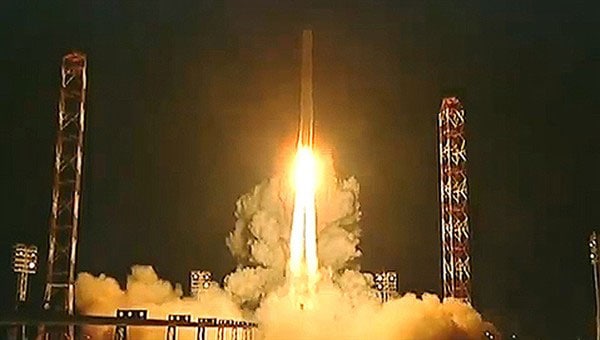
Russia’s first interplanetary mission in over 15 years has failed after launch due to an engine mishap that prevented the unmanned spacecraft from being sent on its proper course toward Mars. The craft – dubbed Phobos-Grunt – is now trapped in orbit around Earth with engineers having around three days to save the craft before its batteries run out.
Phobos-Grunt, costing $163m, is a Russian Space Agency mission that was designed to travel to Mars’ moon Phobos and return up to 200 g of its soil to Earth in a three-year trip ending in 2014. The craft is also taking a Chinese probe – Yinghuo-1 – that would separate from Phobos-Grunt to orbit Mars for one year to study the planet’s atmosphere. The 115 kg probe is the first by China to venture to another planet.
Phobos-Grunt (which means Phobos-soil) was launched at 20:16 GMT on Tuesday 8 November from the Baikonur launch pad in Kazakhstan on a Zenit-2SB rocket. The craft initially launched successfully and separated from its Zenit launch vehicle. However, the craft’s own propulsion then failed and it began to veer off course. Phobos-Grunt could not establish its correct orientation in space, preventing the command activating its propulsion system.
“The engine did not fire, neither the first nor the second burn occurred,” Russian space agency chief Vladimir Popovkin told the Interfax news agency. “I would not say it is a failure, it’s a non-standard situation, but it is a working situation.”
Ground controllers now have three days to upload new instructions to the spacecraft before the on-board batteries are fully discharged. This could also indicate that Phobos-Grunt cannot use its solar panels to recharge the batteries.
The malfunction of Phobos-Grunt comes after Russia’s last mission to Mars – Mars 96 – also failed on its way to the red planet when the probe re-entered the Earth’s atmosphere, breaking up over the Pacific Ocean.
Earlier this year Ziyuan Ouyang, chief scientist of China’s lunar programme, told Physics World that the country now “has all the technology and know-how to eventually explore Mars on its own”.



